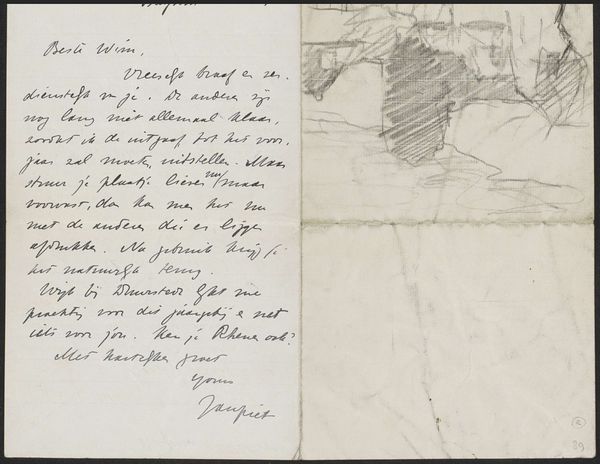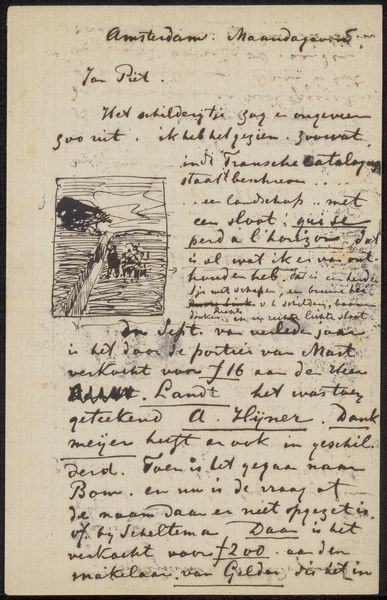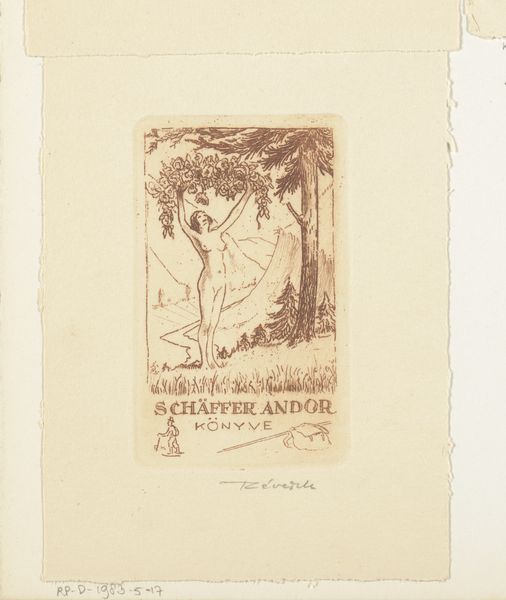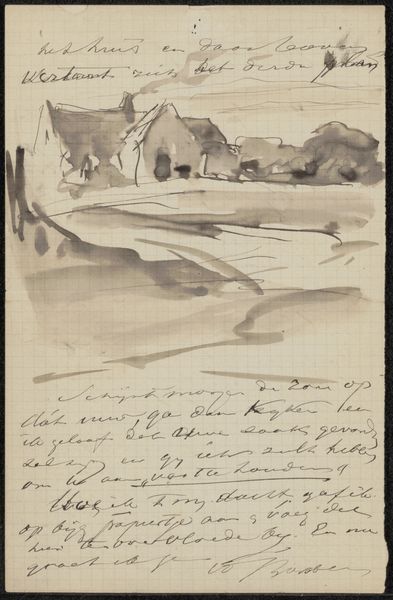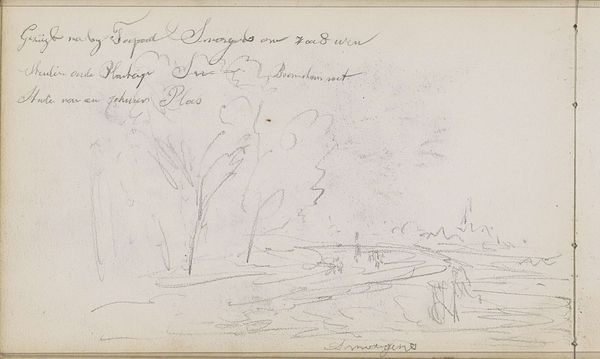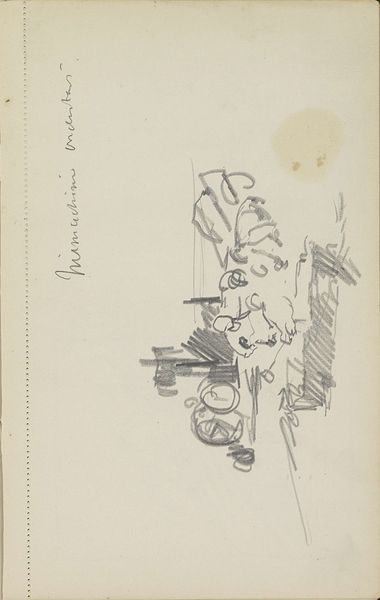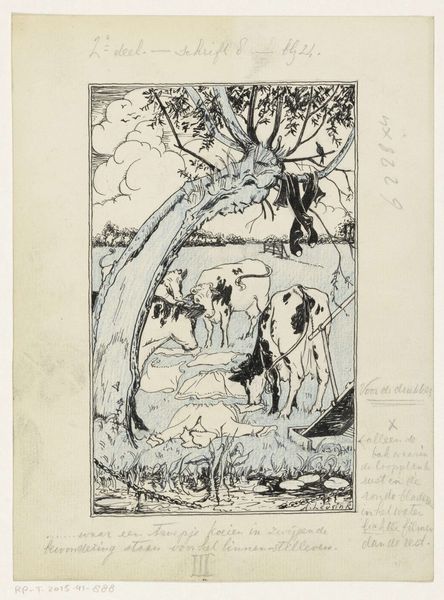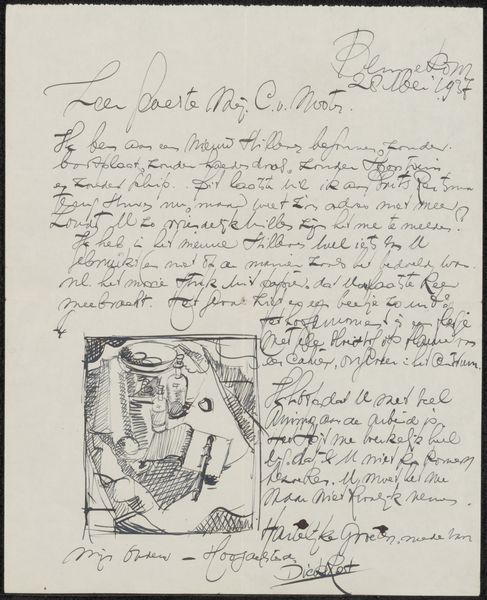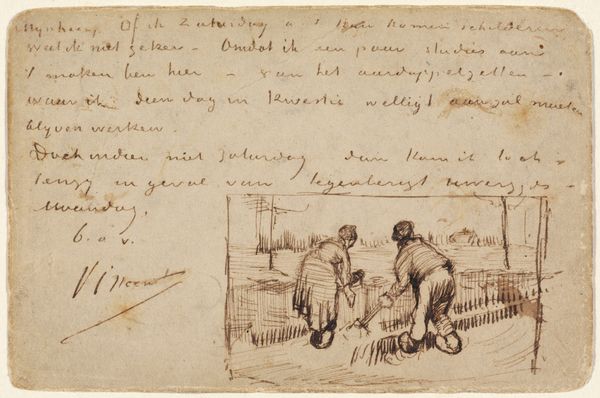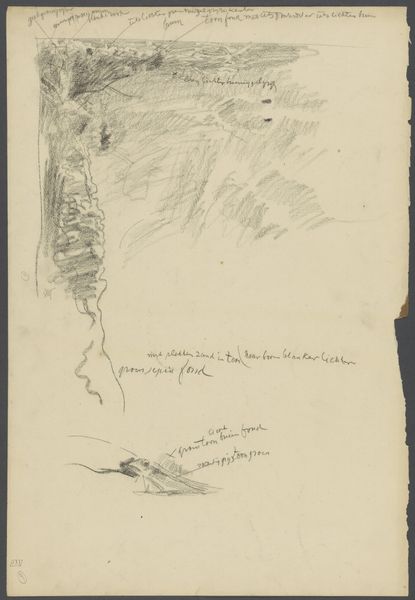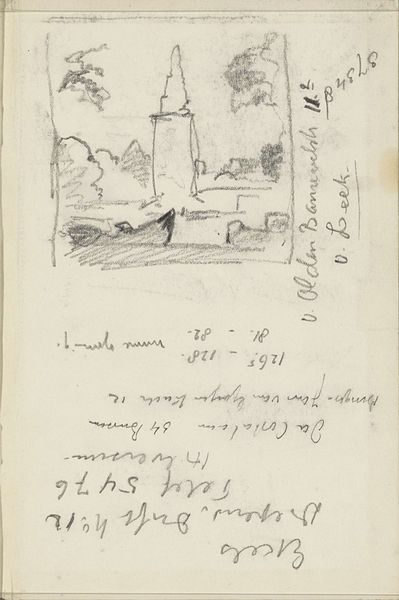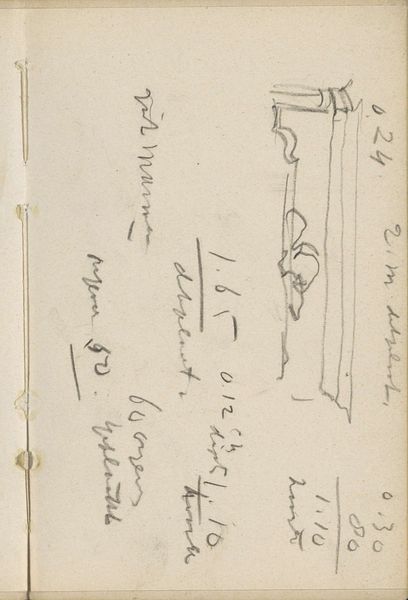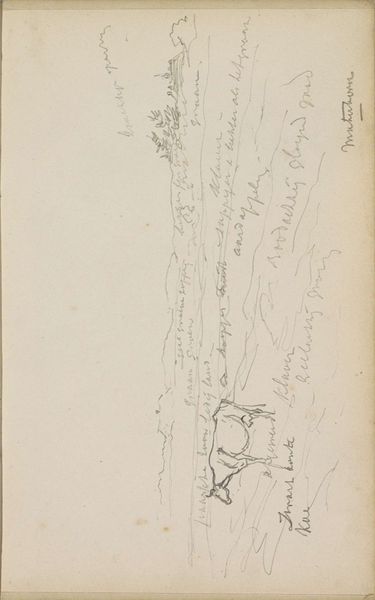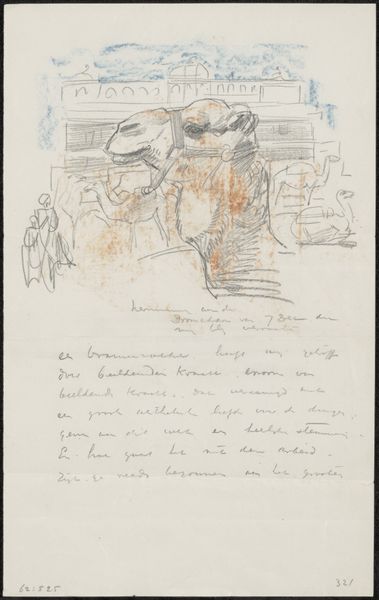
Copyright: Rijks Museum: Open Domain
Curator: This unassuming drawing, “Brief aan Philip Zilcken,” possibly from 1927 by Ferdinand-Sigismund Bac, captured in ink and pen, presents such a formally ordered scene. It’s almost dreamlike. What strikes you most about it? Editor: It’s this contrast, actually. The garden looks manicured, very geometric, but there's a handwritten letter beneath. It's a bit like a personal note attached to a very formal space. What can we gather from juxtaposing the artwork with the letter, written in French? Curator: It points us towards considering the dynamics of patronage and artistic circles during the early 20th century. We can examine the social networks of artists, writers, and intellectuals like Bac and Zilcken. This letter acts as a vital artifact. Think about the act of sending a drawing versus, say, an email today. What kind of statement is Bac making by using his art in this communication? How might this influence our understanding of artistic value and interpersonal relationships? Editor: I see, so it’s not just about the aesthetic beauty of the drawing, but the social and historical context surrounding its creation and circulation. It is the intersection between the personal, professional, and the art itself. What I initially saw as simply an architectural sketch actually acts a crucial piece of historical context. Curator: Exactly! Consider, too, the gender dynamics. How does Bac’s privilege as a male artist of the time shape his artistic production and interactions with other influential figures? Examining those intersections is so important. Editor: That's fascinating. I’ll never look at a “simple” landscape sketch the same way again. Curator: Precisely the point! The artwork now serves as a bridge for exploring intricate societal structures and power dynamics.
Comments
No comments
Be the first to comment and join the conversation on the ultimate creative platform.
